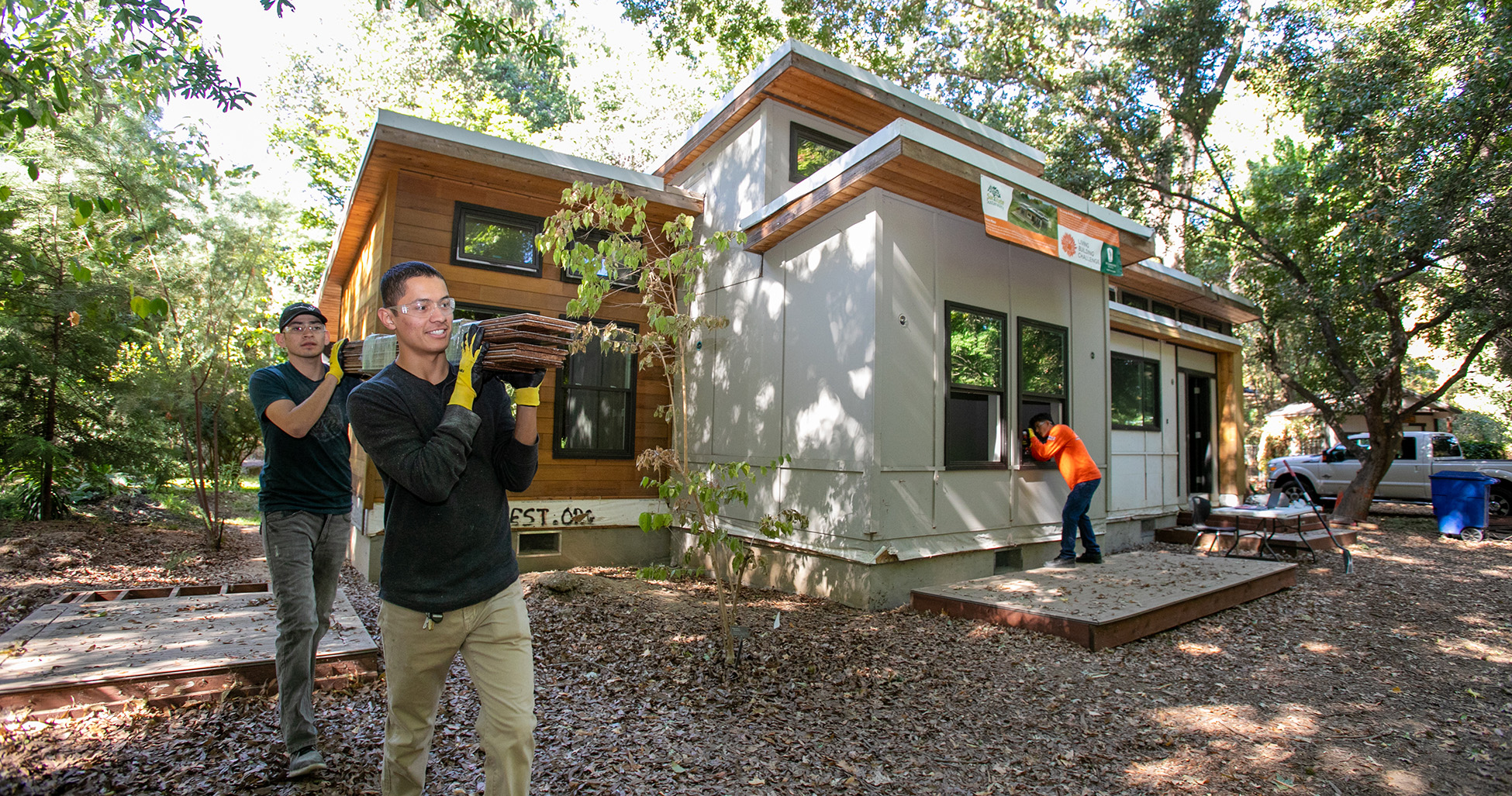

Sac State team Works to Give ‘Living’ Building Its Place in the Sun
Dixie Reid
The future of global sustainability is tucked into a stand of beautiful shade trees in Sacramento State’s University Arboretum.
The Reflect Home in its first life: A 2015 video showcased Sac State’s Solar Decathlon project.
That’s a problem, because dappled sunshine that sneaks through the foliage won’t generate sufficient solar energy to power a 1,000-square-foot building.
“There are some old storage sheds down the way where we’re looking to locate our solar panels and feed the house from there,” says Gareth Figgess, professor of construction management. “But there will be a drop in efficiency, because it has to travel so far.”
Challenges abound as the University sets out to transform the Reflect Home—a modular two-bedroom house designed and built by Sac State students for the U.S. Department of Energy’s 2015 Solar Decathlon—into something even more special. Once done, it will be the first Living Building on a California college campus and only the second of its kind in Sacramento.
It will serve as a sustainability-research lab and home to the new University Arboretum Learning Center. It’s expected to open in fall 2019.
The Living Building Challenge, a program of the International Living Future Institute, is the world’s most rigorous standard for green buildings. Certification requirements will be difficult to accomplish in an existing building, even one built to be energy efficient.
A Living Building generates more energy than it uses, is free of toxic chemicals, and dramatically diminishes its energy footprint. It composts waste onsite, and it harvests, uses, and treats all of its water. It also must support its inhabitants with a built-in food production system.
Mechanical engineering students, led by Professor Rustin Vogt, designed a rainwater catchment and filtration system as a part of their senior project. His students also will evaluate the building’s energy draw as a part of their classroom work. Construction management students, under Figgess’ guidance, will design and build a new deck and upgrade the existing bathroom to meet ADA requirements. And students in Professor Kelly Thompson’s Food Production and Sustainability class will build and maintain permanent food-production systems, including aquaponics.
“It’s exciting that different departments around campus are working on different aspects of this project,” says Ryan Todd, Sac State Sustainability manager. “I’m hoping that we can do really cool sustainable tech here, so that when new buildings go up on campus, we can point to the Living Building as an example of what we can and should do.”
Sacramento State was among 20 universities worldwide selected for the 2015 Solar Decathlon, held in Southern California, and challenged to design, build, and operate a solar-powered house that was cost effective, energy efficient, and appealing to area home buyers.
The Sac State team consisted of students and alumni from construction management, mechanical engineering, interior architecture, and communication studies. Figgess was lead faculty advisor and hands-on construction manager for the two-year project.
After the decathlon, the Reflect Home was shipped back to campus, where it spent nearly two years deteriorating in a parking lot before being moved to the arboretum. That’s when Todd, the sustainability manager, saw an opportunity for the University to take on the Living Building Challenge.
“The project takes the most stringent sustainable-building certification program in the world and merges it with the idea of the campus as a living laboratory,” Todd says. “To date, there is only one fully certified Living Building in California, so the fact that we’re pursuing certification makes us highly innovative. And the fact that we are doing it entirely with students, faculty, and staff is a bit crazy, honestly.”
That’s because, Todd says, professional engineers and architects are only now figuring out the approach the Sac State team has embraced—which is no small point of pride.
“Once this is complete,” Todd says, “it will be the only certified Living Building anywhere built almost entirely by students and faculty.”
11/12/18
